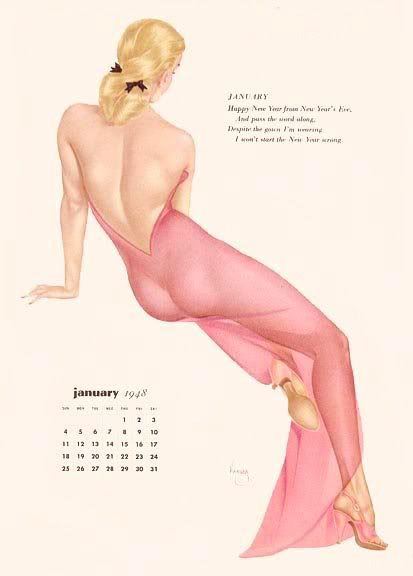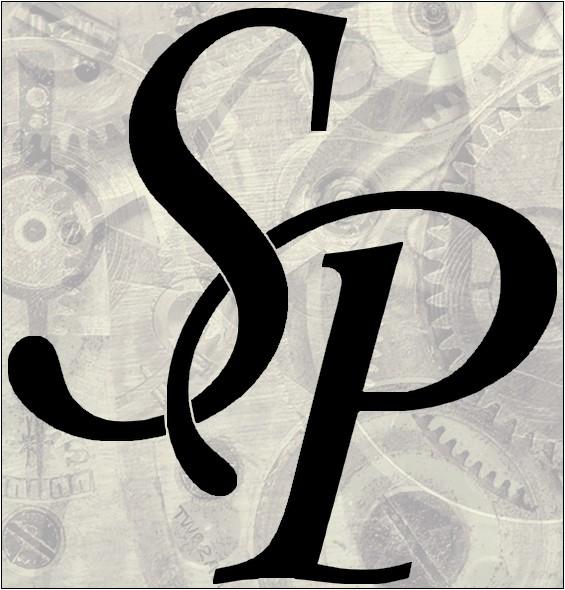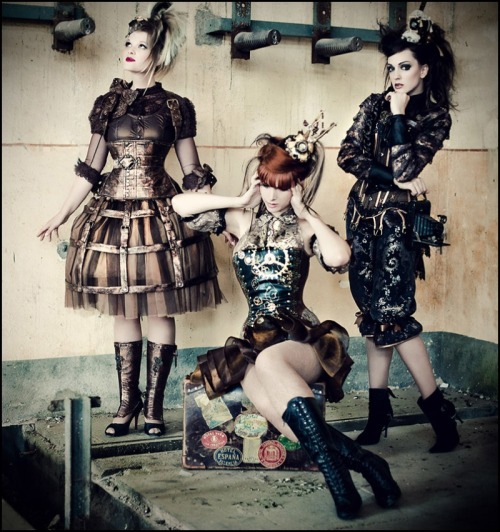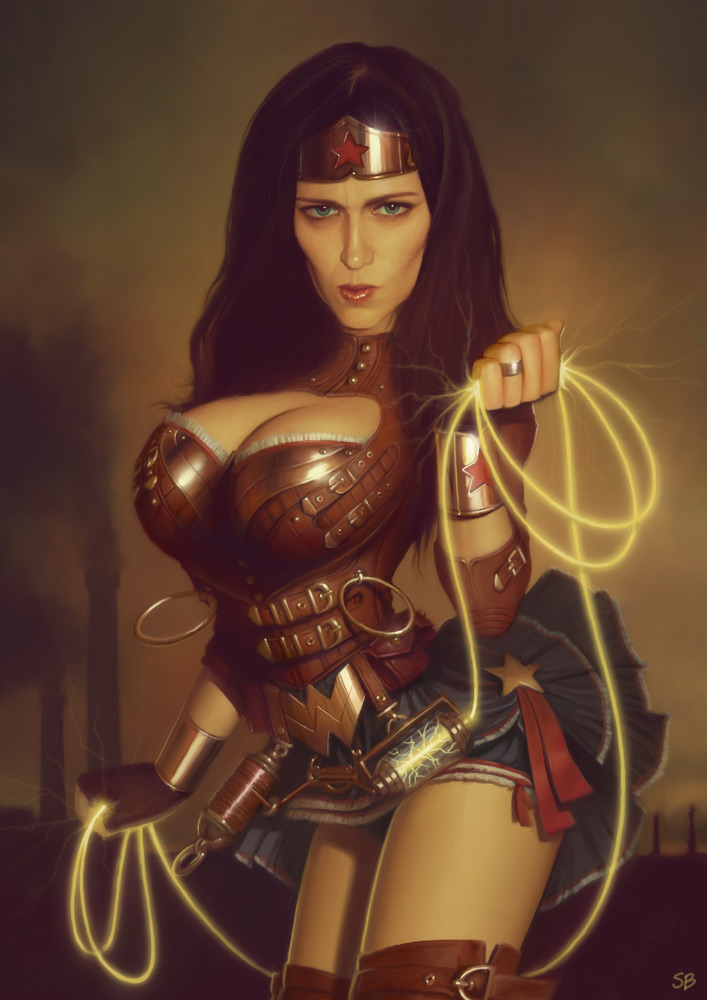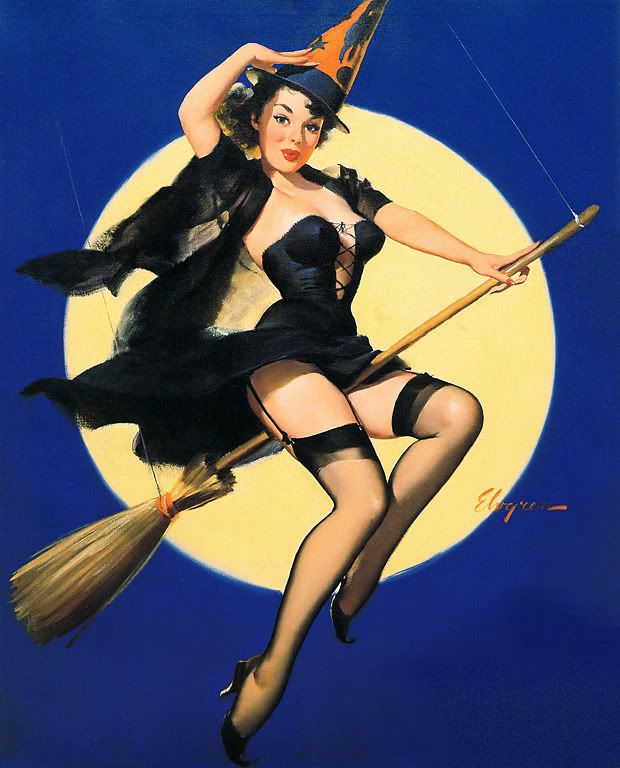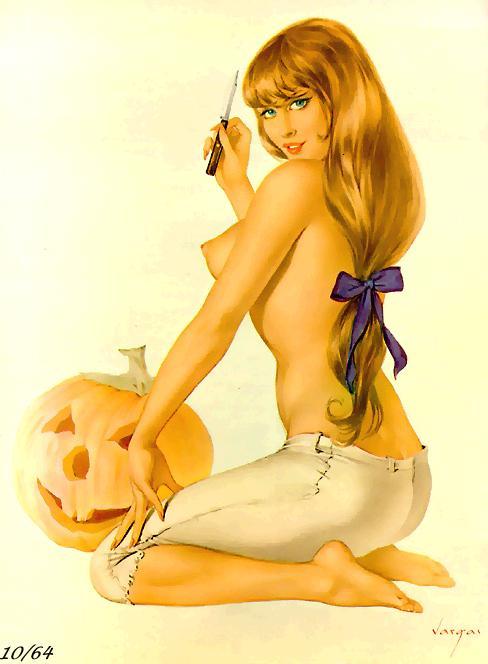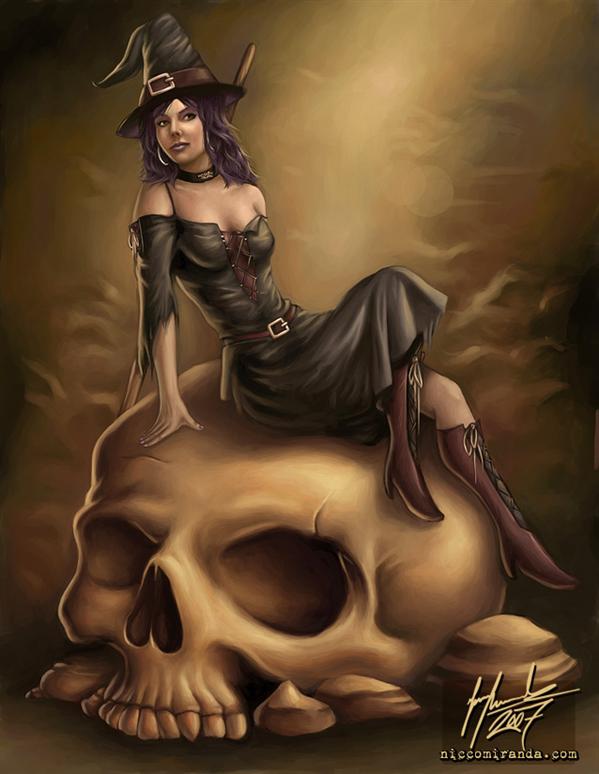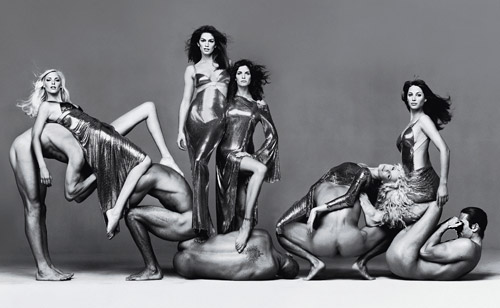HAPPY NEW YEAR!!!
Saturday, December 31, 2011
HAPPY NEW YEAR!!
Thank you everyone for visiting my blog. I know I haven't posted much here, especially of late, but you kepp it going, so...
Sunday, November 27, 2011
Julius Leblanc Stewart Paintings
Julius Leblanc Stewart was an American-born artist who lived in France.He was born on September 6, 1855 and died in Paris, France on January 5, 1919. Julius Leblanc Stewart nicknamed "the Parisian from Philadelphia". Here are some of his paintings:
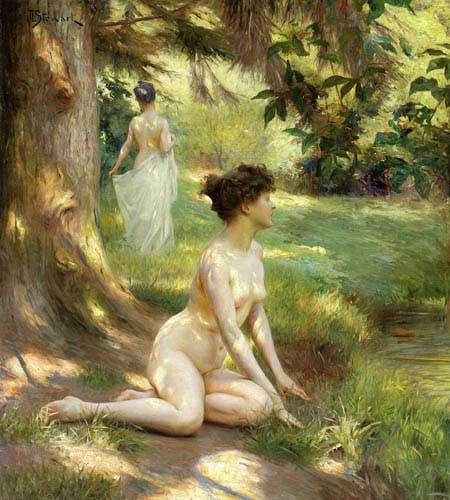 | ||||||
| Sunlight - 1919 |
 | ||||
| The Glade - 1900 |
 |
| Nude in the Forest- before 1919 |
 |
| Nymphs Hunting |
 |
| Study of a nude woman |
Sunday, November 20, 2011
Lady Godiva
.
Lady Godiva or Godgifu was an English countess, who according to historians, flourished circa 1040-1080. She was the wife of Leofric,Earl of Mercia. The couple were noted for their great generosity to religious houses.In 1043 Leofric founded and endowed a Benedictine monastery at Coventry, to which Godiva persuaded Leofric to found the monastery her; and the endowment of the minister at Stow St. Mary, Lincolnshire. Lady Godiva and her husband are also commemorated as benefactors of other monasteries at Chester, Much Wenlock, and Evesham. The town of Coventry received from Lady Godiva, a number of works in precious metals that were made for this purpose and bequeathed a necklace valued at 100 marks of silver. Evesham received another necklace, to be hung around the figure of the Virgin Mary accompanying the life -size gold and silver rood* and St. Paul's Cathedral, London received a a gold - fringed chasuble*. She and her husband were among the most munificent* of several large Anglo-Saxon donors of the last decade before the Norman Conquest; the Norman bishops made short work of their gifts, either carrying them off to Normandy or melting them down for bullion.
The manor of Woolhope in Herfordshire, along with 4 others, was given to the cathedral at Herefordshire before the Norman Conquest by Godiva and Wulviva ( said to be Godiva's sister). The church has a 20th century stained glass window representing them.
Lady Godiva's mark, di Ego Godiva Comitissa diu istud desideravi, appears on charter that was supposedly given to her by Thorold of Bucknall to the Benedictine monastery of Spalding. The charter is considered to be a fake by many historians. Even so, it is possible for Thorold to be Lady Godiva's brother.
After the death of her husband in 1057, Godiva lived on until sometime between the Norman Conquest an 1080. She is mentioned in the Doomsday survey* as one of the few Anglo-Saxons and the only woman to remain a major landholder shortly after the Conquest. By the time of this survey, in 1086, Godiva had died, but what had been her lands are still listed, but now held by others.
Lady Godiva's burial spot is a matter of debate. The Chronicon Abbatiae de Evesham or the Chronicles of Evesham,say that she is buried the Church of the Blessed Trinity at Evesham, which is no longer standing. But according to the Oxford Dictionary of National Biography Lady Godiva is buried by Leofric in Coventry, no matter what the Evesham Chronicles say.
Lady Godiva is known to popular legend, she obtained a reduction in the excessive taxes levied by her husband on the people of Coventry, by consenting to ride through town naked on a white horse. The townspeople were to stay inside and shut there windows while she to look at her ride, clothed only in her long hair. But while she was on her legendary ride, one townsman, a tailor, disobeyed her proclamation and looks, forever being known as Peeping Tom. In the end Lady Godiva's husband keeps his word and does away with the required taxation of the people of Coventry.
*ROOD- crucifix
* CHASUBLE - outermost liturgical vestment worn by clergy for the celebration of the Eucharist.
*MUNIFICENT- very liberal in giving or bestowing
*DOOMSDAY SURVEY- record of the great survey of much of England and parts of Wales completed in 1086.
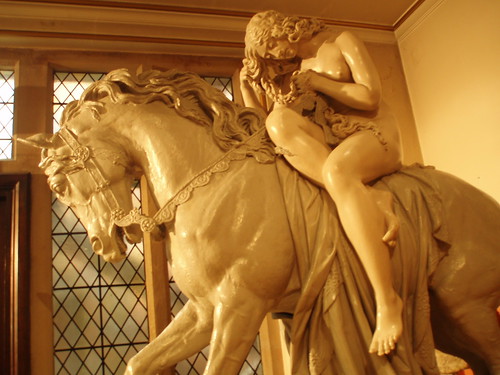 |
| 19th century Lady Godiva statue John Thomas,sculptor |
Lady Godiva or Godgifu was an English countess, who according to historians, flourished circa 1040-1080. She was the wife of Leofric,Earl of Mercia. The couple were noted for their great generosity to religious houses.In 1043 Leofric founded and endowed a Benedictine monastery at Coventry, to which Godiva persuaded Leofric to found the monastery her; and the endowment of the minister at Stow St. Mary, Lincolnshire. Lady Godiva and her husband are also commemorated as benefactors of other monasteries at Chester, Much Wenlock, and Evesham. The town of Coventry received from Lady Godiva, a number of works in precious metals that were made for this purpose and bequeathed a necklace valued at 100 marks of silver. Evesham received another necklace, to be hung around the figure of the Virgin Mary accompanying the life -size gold and silver rood* and St. Paul's Cathedral, London received a a gold - fringed chasuble*. She and her husband were among the most munificent* of several large Anglo-Saxon donors of the last decade before the Norman Conquest; the Norman bishops made short work of their gifts, either carrying them off to Normandy or melting them down for bullion.
The manor of Woolhope in Herfordshire, along with 4 others, was given to the cathedral at Herefordshire before the Norman Conquest by Godiva and Wulviva ( said to be Godiva's sister). The church has a 20th century stained glass window representing them.
Lady Godiva's mark, di Ego Godiva Comitissa diu istud desideravi, appears on charter that was supposedly given to her by Thorold of Bucknall to the Benedictine monastery of Spalding. The charter is considered to be a fake by many historians. Even so, it is possible for Thorold to be Lady Godiva's brother.
After the death of her husband in 1057, Godiva lived on until sometime between the Norman Conquest an 1080. She is mentioned in the Doomsday survey* as one of the few Anglo-Saxons and the only woman to remain a major landholder shortly after the Conquest. By the time of this survey, in 1086, Godiva had died, but what had been her lands are still listed, but now held by others.
Lady Godiva's burial spot is a matter of debate. The Chronicon Abbatiae de Evesham or the Chronicles of Evesham,say that she is buried the Church of the Blessed Trinity at Evesham, which is no longer standing. But according to the Oxford Dictionary of National Biography Lady Godiva is buried by Leofric in Coventry, no matter what the Evesham Chronicles say.
 |
| Lady Godiva statue, Sir William Reid Dick, 1949 |
Lady Godiva is known to popular legend, she obtained a reduction in the excessive taxes levied by her husband on the people of Coventry, by consenting to ride through town naked on a white horse. The townspeople were to stay inside and shut there windows while she to look at her ride, clothed only in her long hair. But while she was on her legendary ride, one townsman, a tailor, disobeyed her proclamation and looks, forever being known as Peeping Tom. In the end Lady Godiva's husband keeps his word and does away with the required taxation of the people of Coventry.
 | |
| Lady Godiva by John Collier, ca 1897 |
*ROOD- crucifix
* CHASUBLE - outermost liturgical vestment worn by clergy for the celebration of the Eucharist.
*MUNIFICENT- very liberal in giving or bestowing
*DOOMSDAY SURVEY- record of the great survey of much of England and parts of Wales completed in 1086.
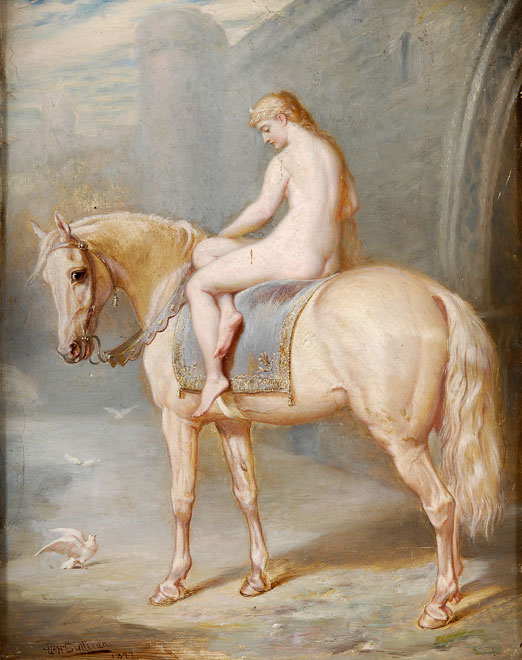 |
| Lady Godiva by William Holmes Sullivan 1877 |
Sunday, November 13, 2011
Monday, October 31, 2011
Happy Halloween!
I'm sorry I sure thought that I had posted this for Halloween. i hope you enjoy it just the same.
HAPPY HALLOWEEN!
Monday, October 24, 2011
Leda Atomica
 | |||||
| Leda Atomica, Salvador Dali circa 1949 |
The oil on canvas painting by Salvador Dali, Leda Atomica was done in 1949. Leda Atomica is Dali's way of interpreting the Annunciation. Leda plays a mortal woman visited by a metamorphosis god in order that she might bear his child, acts, thereafter, a conduit through which her son's mortal counterparts may regain access to the god that gave them birth. "A figure of intercession , an agent of mediation between rational man and state beyond the rational, she is both the child-woman and woman with child" because she is a virgin, based on the Christian-Catholic divinity belief. Gala, in a sense is a god's muse, and is close to those incarnations of the surrealist muse "Gala is being the supreme example" according to Dali, who owe their pictorial and literary identity to the activity of their men. The muse is the object of "desire, of love and G_d is, famously, love itself", according to Dali's philosophy. Dali's transformation of Mary is the result of love as if he created his love of Gala, like G_d to Mary.
Courtesy of World ClassicGallery
__________________________________________
Okay, now for a maybe,not quiet so analytical (hopefully) summary :
Leda Atomica depicts the Spartan queen Leda, with a swan. Leda is the frontal portrait of Salvador Dali's wife, Gala, who is seated on a pedestal with a swan suspended behind and to the left of her. Different objects such as a set square, a book, two stepping stools and an egg float around the main figure. In the background on both sides of Cap Norfeu ( cape on the south-eastern end of the Catalonia region of Spain) .
Leda Atomica is housed at the Dali Theatre and Museum in Figueres, Dali's birthplace.
Tuesday, October 11, 2011
Richard Avedon Photos
Tuesday, October 4, 2011
Sophia Loren
Sophia Loren was born on September 20,1934 in Rome, Italy at the Clinica Regina Margherita.
At the age of 14 she entered a beauty contest, though she did not win she was one of the finalist.where she met Carlo Ponti.
Sophia Loren's first English speaking role was in the 1957 movie "The Boy on the Dolphin"
She won an Oscar in 1961 for the movie "Two Women". First major Academy Award for a non-English- language performance and to an Italian actress.
In 1963 she made Vittorio De Sica's movie "Yesterday, Today and Tomorrow". This movie co-starred Marcello Mastroianni. And contains her iconicly famous stripping (?) act.
For more information on Sophia Loren go to my other blog Misha's Blue http://mishasblue.blogspot.com/ for a more in depth post and photos.
Subscribe to:
Comments (Atom)








